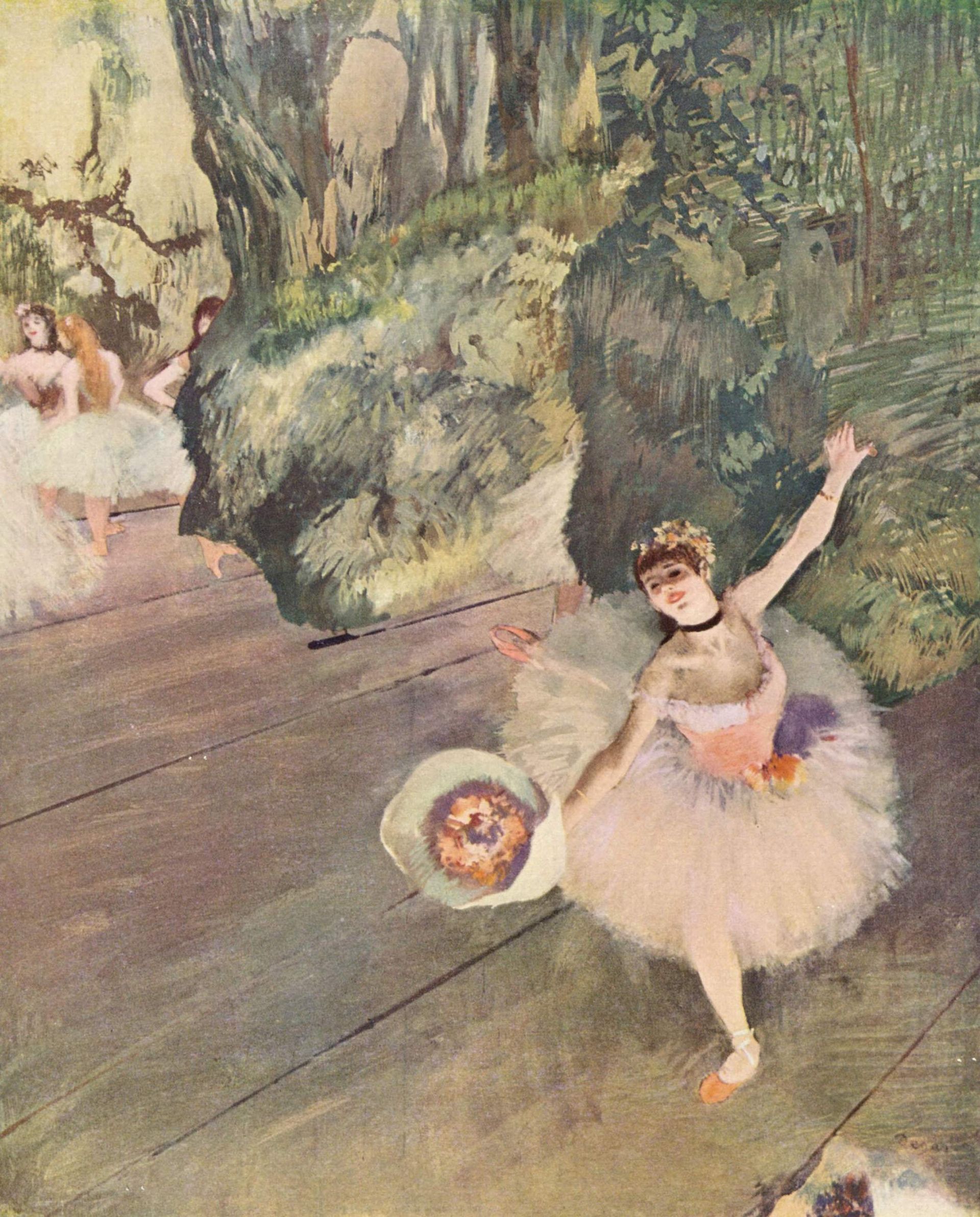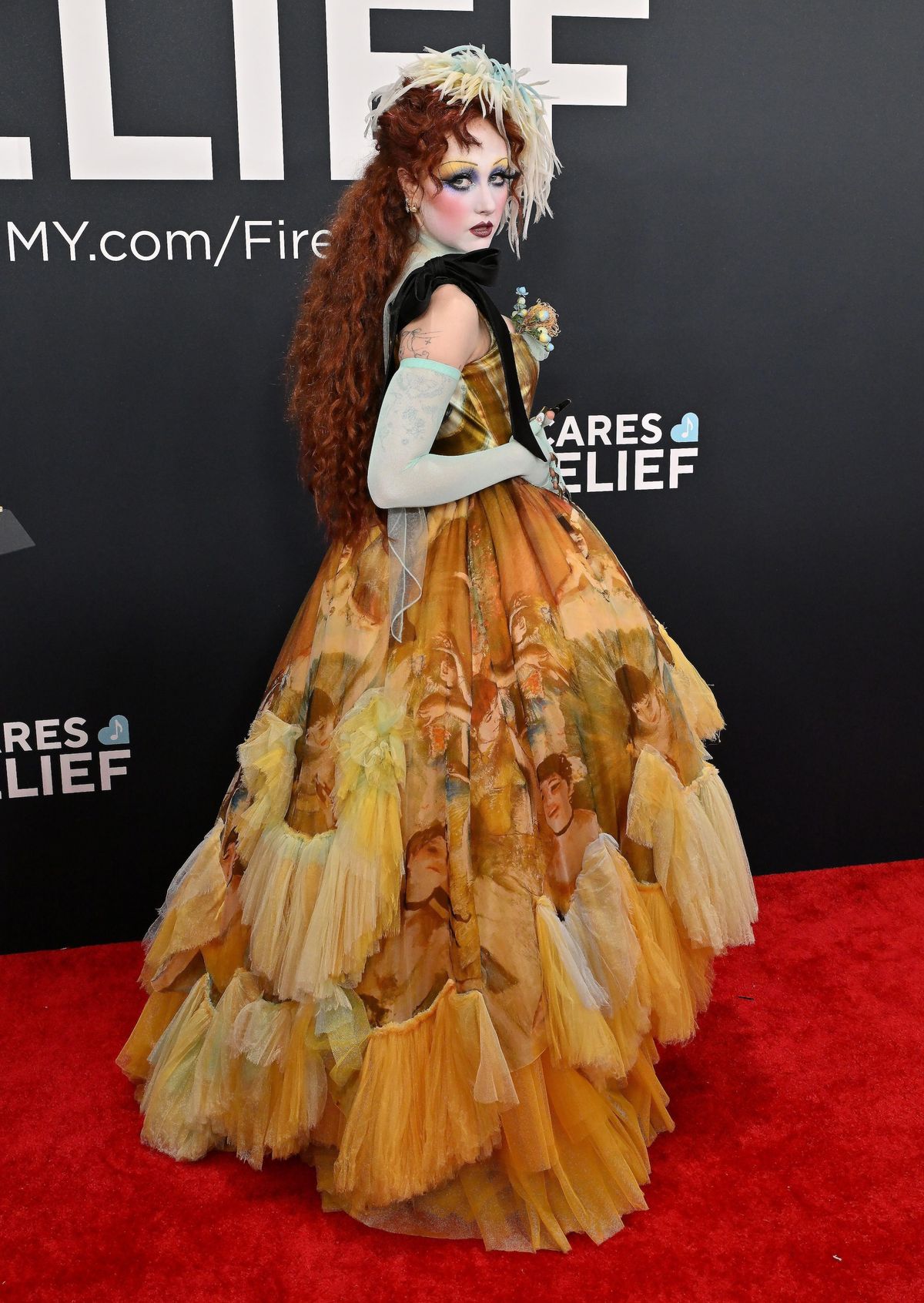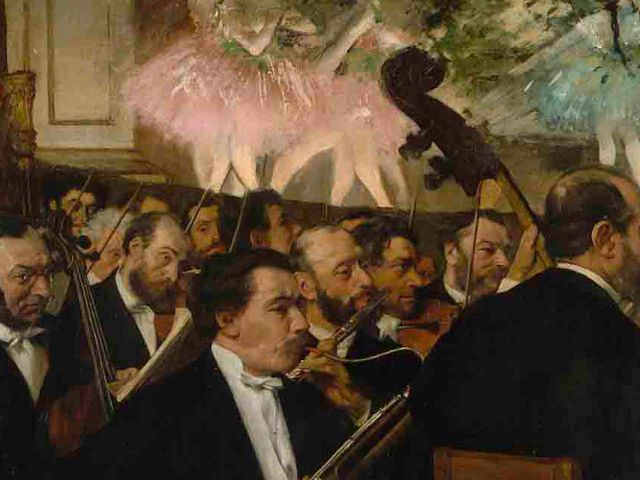Chappell Roan, the campy pop star who saw a meteoric rise to fame last year, brought a taste of Impressionism to the Grammy Awards on Sunday (2 February) with a vintage haute couture gown made with a print featuring images of Edgar Degas’s ballerinas.
For Roan’s red carpet appearance, she wore an archival Jean Paul Gaultier, pulled from the designer’s Haute Couture Spring Summer 2003 show. The yellow and blue tulle gown incorporates a print inspired by Degas’s 19th-century depictions of Parisian ballet dancers. Figures from the dress resemble the woman Degas painted in works including Dancer with a Bouquet (around 1877-78), part of the collection of the RISD Museum, and Ballet (around 1876-77), from the Musée d'Orsay.
Roan was dressed for the Grammys by stylist Genesis Webb, who paired the gown with a feathered headpiece and sheer blue opera gloves.

Dancer Taking a Bow (The Prima Ballerina) (around 1878) by Edgar Degas. The Yorck Project via Wikimedia Commons
Roan won the Grammy award for best new artist, and used her acceptance speech to call on record labels to better support up-and-coming musicians. Before becoming a bonafide pop star after the release of her 2023 album The Rise and Fall of a Midwest Princess, Roan was dropped by her first record label in 2020 and left without health insurance during the Covid-19 pandemic.
“It was devastating to feel so committed to my art and feel so betrayed by the system and dehumanised,” Roan said. “If my label had prioritised it, I could have been provided care (by) a company I was giving everything to. Record labels need to treat their artists as valuable employees with a livable wage and health insurance and protection.”
Degas’s paintings of ballerinas often reference a darker side of the dance industry in the late 19th century, when ballet’s popularity was beginning to fade and many dancers from lower-class backgrounds relied on support from wealthy male patrons. Degas sometimes painted these men as sinister figures looming in the background of performance scenes, such as in Ballet at the Musée d'Orsay.



